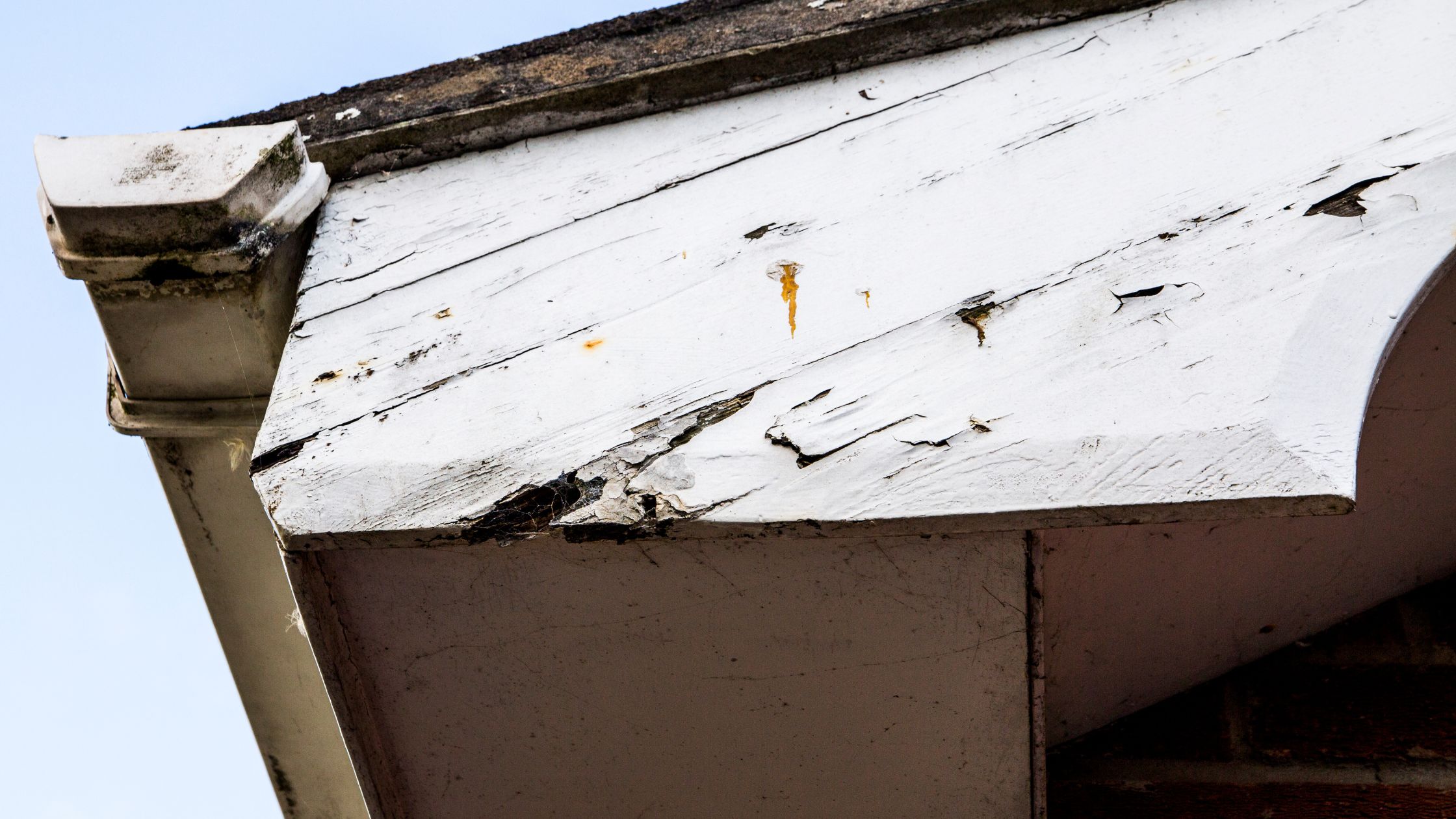Spotting Water Damage: A Guide to Protecting your Fascia

Your home is more than just a structure; it’s a sanctuary that provides comfort and safety for you and your loved ones. While we often focus on the interior aspects of our homes, it’s crucial not to overlook the exterior elements that play a significant role in maintaining its integrity. One such exterior component that often goes unnoticed is the fascia. In this guide, we’ll explore the importance of fascia, how water damage can affect it, and how to spot and prevent potential issues.
Understanding the Fascia:
The fascia is a vital architectural element that runs horizontally along the edge of the roof, attaching to the ends of the rafters. It serves as a protective barrier between the edge of the roof and the outdoor elements. Functionally, the fascia supports the gutters, preventing water from seeping into the eaves or damaging the foundation of your home. A well-maintained fascia contributes to the overall structural integrity of your house, providing stability and protection against various weather conditions.
The Impact of Water Damage on Fascia:
Water damage is a common threat to the fascia, and its effects can be detrimental if left unaddressed. Here are some ways water damage can impact your fascia:
1. Rotting and Decay:
Persistent exposure to water can lead to the rotting and decay of the fascia. Wood fascia is particularly susceptible to this, as moisture creates an ideal environment for fungi and bacteria to thrive, compromising the structural integrity of the wood.
2. Mold and Mildew Growth:
Water accumulation on the fascia can foster the growth of mold and mildew. Not only does this affect the aesthetics of your home, but it can also pose health risks to you and your family.
3. Paint and Finish Damage:
The constant presence of water can cause the paint and finish on the fascia to peel and crack. This not only diminishes the curb appeal of your home but also exposes the fascia to further damage.
Spotting Water Damage:
Detecting water damage early is crucial in preventing extensive and costly repairs. Here are some signs that your fascia may be experiencing water damage:
1. Discoloration:
Keep an eye out for any discoloration or staining on the fascia. Dark spots or patches may indicate water absorption and potential damage.
2. Peeling Paint:
If you notice paint peeling or blistering on the fascia, it’s a clear sign that water is infiltrating the wood. Addressing this issue promptly can prevent further damage.
3. Sagging or Warping:
Water damage can cause the fascia to sag or warp. Regularly inspect the fascia for any signs of deformation, as this may indicate structural issues.
4. Visible Mold or Mildew:
Mold and mildew growth is a visible indicator of excess moisture. If you see any signs of these, it’s essential to address the water source and clean the affected areas promptly.
Preventing Water Damage to Your Fascia:
Now that you’re aware of the potential risks and signs of water damage to your fascia, let’s explore some preventive measures:
1. Regular Inspection:
Schedule regular inspections of your fascia, especially after severe weather events. Look for signs of damage and address them promptly.
2. Gutter Maintenance:
Clean your gutters regularly to ensure proper water drainage. Clogged gutters can lead to overflow, causing water to seep into the fascia and eaves.
3. Proper Ventilation:
Ensure proper ventilation in your attic to reduce humidity levels. High humidity can contribute to the deterioration of the fascia.
4. Waterproofing:
Consider applying a waterproof sealant or paint to your fascia to provide an additional layer of protection against moisture.
5. Prompt Repairs:
If you notice any signs of water damage, such as rot or mold, address the issue immediately. Prompt repairs can prevent further deterioration and save you from more extensive and costly repairs down the line.
Conclusion:
Protecting your home from water damage involves a holistic approach that includes both the interior and exterior components. The fascia, often overlooked, plays a crucial role in maintaining the structural integrity of your house. By understanding the potential risks, regularly inspecting for signs of damage, and taking preventive measures, you can ensure that your fascia remains in optimal condition, protecting your home for years to come. Remember, a well-maintained fascia not only preserves the aesthetic appeal of your home but also contributes to its overall durability and longevity.

In Awe Roofing Limited is an Award-Winning, family owned and operated Vancouver Roofing Contractor with over 17 years of roofing experience. We serve the entire Lower Mainland area, from Whistler to Chilliwack, employing a team of professional staff members. Our team has won numerous awards including Best of Homestars for the last five years, and Three Best Rated six years in a row. Learn more






















